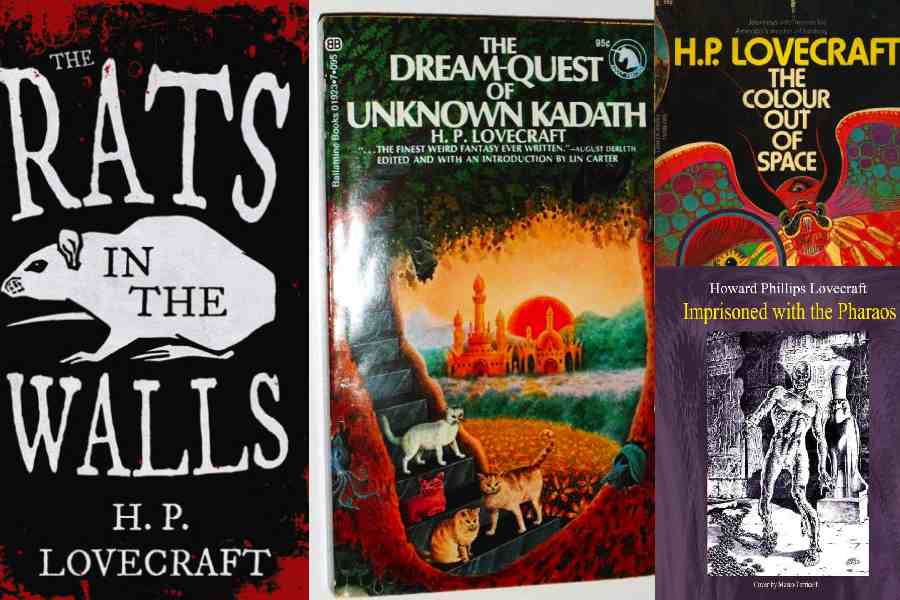Last week was the 87th death anniversary of the American horror and weird fiction writer, Howard Phillips Lovecraft. The occasion presented an opportunity to revisit Lovecraft’s legacy. Although dying virtually unrecognised in 1937, Lovecraft garnered immense popularity posthumously. From the Batman mythos naming the dreaded Arkham Asylum after his works to contemporary artists like Junji Ito citing the author’s inspiration over his own style, Lovecraft has become a definitive name in horror media.
Writers, filmmakers, video game creators and musicians continue to adapt from Lovecraft’s abundant repertoire. Moreover, the subgenre dubbed as Lovecraftian Horror, referring to a style emphasising cosmic dread, the forbidden and the unknowable, has been modelled after his writing style. Below is a list of titles by the author, including both short stories and novellas, that serve to testify the legacy of H.P. Lovecraft.
The Call of Cthulhu
This is perhaps the quintessential Lovecraft short story and one that has been paid countless tributes to by generations of Lovecraftian horror admirers. Published in 1928, it centres around an esoteric God called Cthulhu, who visited Earth a million years ago, yet who continues to torment its victims through dreams. Although unknown in exact appearance, a series of manuscripts and a bas-relief depicts Cthulhu as a grotesque, octopoid entity. Cthulhu also happens to be a popular culture icon, having been the subject of numerous cartoons, a song by Metallica, and an inspiration for the character Davy Jones’s appearance in Pirates of the Caribbean.
Dagon
A story quite short in length, Dagon can serve as a good first introduction to Lovecraft’s writing style and finesse. This tale, first published in 1919, is a written account of an anonymous, seafaring character who falls into the sea and drifts across the Pacific Ocean, only to confront remains linked to a prehistoric aquatic civilisation. Although not exactly named, these remains are associated with the Philistine fish-God, Dagon, who was worshipped there. The use of words is lucidly elaborate in vividly illustrating a horrifying encounter that the unnamed character happens to have there, whose consequences would follow him for the remainder of his life.
At the Mountains of Madness
This novella, first published in 1936, centres around an expedition carried out in Antarctica by a group of explorers led by the narrator, Dr. William Dyer of the Miskatonic University situated in the fictional city of Arkham. In its pursuit, the group chances upon prehistoric life forms previously unknown to humankind, which are neither plants nor animals, but linked to extraterrestrial beings dubbed as the “Elder Ones”. What follows is a series of mishaps that cost many their lives and sanity. Although slower in its pace compared to his other tales, At the Mountains of Madness is an excellent testament to Lovecraft’s expertise in atmospheric world-building and his ability to weave the unknown.
The Colour Out of Space
Lovecraft wrote this story with a desire for a detour from how aliens had been portrayed in most fictional works prevalent during his times. The result of his dissatisfaction was this short story which saw the author undertaking a somewhat different approach towards his style of cosmic horror. First published in 1927, this disturbingly haunting story is about a meteorite that crashes in a farm situated in Arkham, and which brings with it a strange and bizarre colour that affects anything it touches. As a result, isolation, madness and death follow. Combining science fiction and horror, Lovecraft is at his peak here in his dreadful depiction of the insignificance of human life in the face of extraterrestrial beings.
The Outsider
First published in 1926 and shrouded in utter loneliness, this short story is a first-person narration of a miserable individual who has never made contact with another human being.
Forlorn, thirsting for light and lacking any substantial memory of his origin, this narrator has only a giant castle to roam around in. Moreover, a determined attempt to escape and search for human contact only invites more supernatural trouble. Apparently inspired from Lovecraft’s own literary idol and the gothic maestro, Edgar Allan Poe, this story also portrays the melancholy characteristic of the latter’s writing style.
The Dunwich Horror
This 1929 novella is set in a desolate village in Massachusetts called Dunwich and centres around a hideously deformed albino named Wilbur Whateley. Wilbur and his grandfather, Old Whateley, conceal an unknown entity at their farmhouse, which continues to grow to colossal proportions. As depicted through frightening revelations in the story, both Wilbur and the entity are mysteriously connected to the omniscient Lovecraftian deity, Yog-Sothoth. Aside from The Call of Cthulhu, this novella happens to be one of the core building blocks of the Cthulhu Mythos, a shared mythical universe crafted by the author.
The Rats in the Walls
Even in his style of cosmic horror that deals with otherworldly entities, one can find gory and graphic details of elaborate vividity that Lovecraft often included to describe the sorrowful state of humankind. However, this 1924 short story is perhaps where such graphic imagery soars at its epitome, and that too without the aid of any larger-than-life entity but something as mundane as rats. The repulsive feeling that the presence of this beast in one’s house arouses is entwined in this story with a dreadfully gruesome ancestral history. More than just horror, this story is potentially capable of arousing disgust, which may rightly justify the sensation of “creeping”.
The Dream — Quest of Unknown Kadath
This novella was published posthumously in 1943 and is the longest one among the series of works often referred to as Lovecraft’s Dream Cycle. The protagonist, Rudolph Carter, undergoes a celestial journey in a dreamland, where he encounters several supernatural adventures and many otherworldly entities from the Lovecraftian mythos. Due to his knowledge of the customs and languages of the dreamlands, Carter is better suited than most people to undertake this dangerous journey. Itself pacing like a dream, this novella, although ambitious, has however garnered a mixed reception from Lovecraft readers due to its immense length and complexity.
Imprisoned with the Pharaohs
Lovecraft wrote this short story, published in 1924, in collaboration with the renowned illusionist, Harry Houdini. A fictionalised account of an encounter that the latter happened to have in Egypt in 1910, the story narrates how Houdini was lured and kidnapped by his tour guide while in the desert. Thrown in a pit situated underneath the Great Sphinx of Giza, Houdini attempts to escape and comes across various supernatural and mummified horrors. The master illusionist was quite impressed with this tale and collaborated with Lovecraft on many later projects.










